

Classic Buses Profiles
News and mail page 3 (by Dick Gilbert)
Last updated 4 December 2022
SOME LINKS WITHIN THIS WEBSITE: Home Email Links THE COMPLETE WEBSITE MENU Events Diary Halfcab list Small-Ads Classic Irish Buses Classic Manx Buses
Last updated 4 December 2022
Why not share a story or a nice picture here? To send contributions you can Email me here.
See more archived news items and pictures on Page 1 (latest) or Page 2 (older).
GUERNSEY ALBIONS
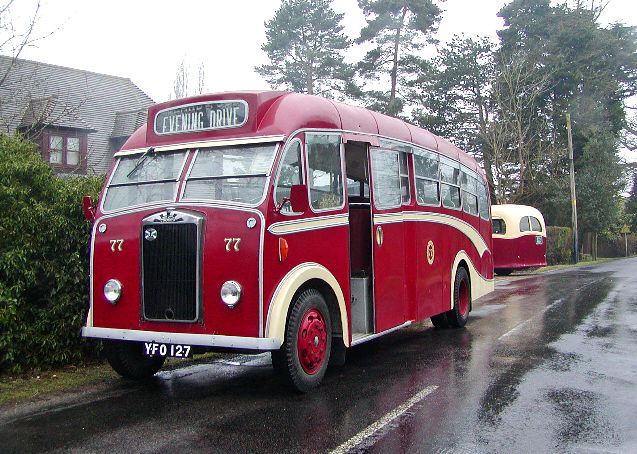
Peter Davies kindly sent me this interesting information about his Albion Victor (YFO 127, originally Guernsey 8226 in 1958, Victor FT39 KAN / Reading B35F), and others he has known! Guernsey fleet number 77 is one of a string of Albions supplied to Guernsey Motors and Guernsey Railway. Designed externally to look like coaches they are in fact buses, licensed to carry 35 seated passengers and 7 standing. Being 27ft long and with a width limit of just 7ft, passengers were in close contact with their fellow travellers!
The four cylinder Albion diesel engine proved reliable, powerful for its size and economical (15 to 17mpg). The chassis has the benefit of being a straight ladder section design and as a result it was simple and strong. The five speed constant mesh crash gear box is a delight, the gearstick is light to move, close at hand, precise and has a relatively short travel. The Victors were not fitted with overdrives and depending on rear axle ratios the top speed varies from 34 to 48 mph. 77 was originally fitted with a low ratio axle, 34mph, however during Brian Catchpole's ownership in the 1980s and 1990s an ex Harrods van mid-range axle was installed. 40mph! Magic!
Red and White of Chepstow took over the Guernsey Railway in 1949 and Guernsey Motors in 1951. Red and White was associated with the Albion agents Watts of Lydney and henceforth Albion was the preferred supplier. A total of 39 Victors were added to the fleet up to 1958. The body was designed specifically by Mr. J. A. Davies, the Guernsey Railway Co. Managing Director, and who had come from the Newbury and District Bus Company, itself owned by Red and White.
Guernsey operated school, private hire, service, and island tour schedules and wished to imply to its travellers (tourists in particular) that it operated a fleet of luxury coaches. With this in mind the Guernsey body followed the Duple Vista outline, but with bus seats. This reduced the number of vehicles required and significantly improved the flexibility of the fleet. The dual purpose Heaver body's appearance hardly changed from 1950 to 1958. In 1956 Heaver's stopped supplying the wooden framed composite bodies and changed to an all aluminium frame. There were many minor changes but the most obvious was the loss of the inset windows and flared lower panels, resulting in a completely flat side. In late 1957 Heaver's ceased trading and Reading and Company of Hilsea near Portsmouth started manufacturing the same design bodies for Guernsey.
I purchased six Albion Victors from the company at the St Peter Port auction in 1980, five for friends and number 77 for myself. Three friends came with me and enough batteries for one bus. The buses came back in threes, three by the roll-on roll-off Channel Islands Ferry, and three as freight on the Commodore Clipper, where they were stowed below decks and craned off in Portsmouth. 77 came on the roll-on roll-off service with the only set of batteries, the other two buses being tow start only. Our arrival at Portsmouth in the dark involved driving 77 out of the ship, turning round and returning on ship to tow start the other two buses in reverse (we could only tow from the front of the buses, i.e. nose to nose), not a popular move with Channel Island Ferries. I had also purchased all the Albion spares from the company, in 25 Johnny Walker boxes.
In 1981 I realised that owning three Victors (JMT 10 and NKO 953 of Fuggles) and only having garage space for two was a disaster in the making, and 77 was sold to Brian Catchpole. Later, finding empty space in my garage enabled me to buy back 77 and use it for another five years, including using it to transfer the wedding guests to and from the church when I got married. The arrival of a 1944 6x6 GMC truck put space at a premium and something had to go, so the Albion passed on to Martin Willetts. In 2009, I had regained a bus space in the garage and coincidentally Martin wanted to sell the Albion! You've guessed it, I purchased the bus for the third time. A new ceiling and the completion of a rewire has just been completed. A repaint is due before Christmas.
The Guernsey Albions are a preservationist's delight, with virtually no wood to go rotten, only two steel panels to go rusty and, booking in at 4 tons ULW, it's relatively easy to work on. One person can easily take the cylinder head off and change the engine if need be. It will do 18-19 mpg on long runs and 15 mpg on locals. Being only 7ft wide but still carrying 35 passengers, with half-drop windows, an art déco interior and almost pre-war body, adds up to a very period bus with a unique appearance.
I could of course be biased, having owned at one time or another 1559 (ex The Grays, Guernsey), KCD 697 (ex St Dunstans and Hovis), 6436 (Guernsey 36), NKO 953 (ex Fuggles), 6442 (Guernsey 52), 804 (ex Jersey Motor Transport) and 8227 (Guernsey 77). I was also fortunate in being able to rescue another six Guernsey Victors by purchasing and importing the buses on behalf of friends. I would be pleased to hear from any Victor owners to share experiences and information.
Thanks Peter for the information and photo. If you'd like to contact him, email me and I'll pass messages on.
1948 DAIMLER WITH A TANGLED HISTORY
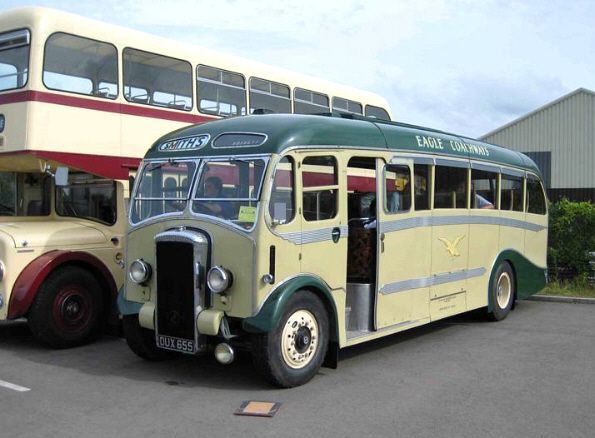
This picture was taken by Clive Holt in July 2008 at Toddington (that's the Gloucester Warwickshire Railway Toddington - not the one on the M1), and was forwarded to me by regular contributor David Beardmore. It caught my eye because you don't often see this coach (I've never seen it), and it has an interesting history.
DUX 655 is a 1947 Daimler CVD6SD with a Metalcraft body fitted (possibly) in 1948. It was new to Smith's Eagle Coachways (T. G. Smith) of Trench, Shropshire, went into preservation in 1974 and is currently owned (and beautifully kept) by a group in Hereford - led, I believe, by the same person that saved it all those years ago.
So what was the body fitted to this coach when new? About 3/4 the way down this page http://www.countrybus.co.uk/independent/soa.htm is a picture of what would appear to be sister vehicle DUX 654 in its original form. Can anyone can throw some light on the matter? Meanwhile thanks again to Clive and David for the photo.
David Hurley kindly sent the following: These two Daimlers had an involved history (extracted from PSV/OS publication 2PD5, Sept. 1971). Both were delivered in 1947 with ACB bodies - 654 C33F, 655 C35F. 654 was rebodied in 1957 with a second hand ACB C35F body from UJ 1441 which had originally been new on 655. 655 was rebodied in 1948 with the Metalcraft C33F body that it still carries.
BUT according to Circle records the original body was not placed on UJ 1441 until 5/50! Either the Metalcraft rebody date should be 1950, OR the swap onto UJ 1441 was earlier. I can't see them not using a virtually new body for two years when there was a general vehicle shortage. So the photo of 654 probably shows what 655 looked like originally.
Thanks David. I think the body swap date was actually 1950, and the mention of 1948 was an error on someone's part. Anyway I think that's evidence enough for me to add DUX 655 to my list of preserved halfcab single deckers, because it was once.
The cream on the cake was when I received this email from Des Lewis in July 2010: Just surfing the web and I came across the Classic Buses News and Mail pages. Just to make myself known, I am the owner and the person keeping the 1948 Daimler CVD6 DUX 655 on the road since purchase on April Fools Day 1974. Good to hear from you Des, and congratulations on keeping a fine vehicle in such good shape for so long.
And then, in November 2011, I received this from Nicholas Smith: I happened upon your webpage and the nice pic of DUX 655. My grandad was Harold Smith, the son of Tom Smith (T. G. Smith) of Smith's Eagle Coachways who owned DUX 655 before it was sold to Des Lewis, current owner.
I was 2 at the time it was sold, so don't remember the actual bus in action, although I do remember my great grandad Tom Smith counting cash on his dining room table at his house in Trench, Shropshire (the house is still there, although the old bus garage is now a newer car repair garage) and I have seen DUX 655 at the Malpas Yesteryear Rally some 10 years ago. I had an email from Des to say that the bus is still going strong and had actually been on a trip to Ireland in 2010.
Many thanks Nicholas. That vehicle has certainly generated some interest.
1947 REGAL RESTORATION ON MALTA

Peter Skerry has sent me more information about the ongoing restoration of 1947 AEC Regal KUM 386. (Just to recap, with chassis number O6625309 it was new to Wallace Arnold Tours with a Duple "A" style C35F body. It was sold to Hardwicks in 1952, and then served with Wimpey, contractors, as a staff bus from 1955 to 1959. It is believed to have arrived in Malta around 1964).
Having been in a field for several decades, it is hard to believe that the rejuvenated chassis shown above is the same vehicle. Remarkably, the engine started up when it was first recovered! Since then the chassis has been shotblasted and straightened as necessary, then painted and reassembled.
A suitable Duple body has been kindly donated by Terry Partridge. The body is from derelict Western National 1303, a 1951 Bristol LL6B which has been stored at Winkleigh, Devon for some years. Terry bought it because he wanted the chassis for spare parts. It should have arrived in Malta by October 2009. Peter says, it is a 30 foot model on a Bristol chassis with top corner windows, which of course will be reconstructed as a 27'6" body without those windows. It has been broken down into various sub-units for shipment and whereas some body panels, glass, stairwell and possibly firewall will be re-used, the bulk will be largely for the purposes of templates for a new structure. As such, a fair amount will be scrapped, but we have no choice but to bring them here without Duple drawings.
The work continues, and Peter asks that anyone who can provide any information or assistance in the restoration, or has pictures of the original vehicle, contact him via this website. Meanwhile here is a photo of the body at Winkleigh before dismantling.
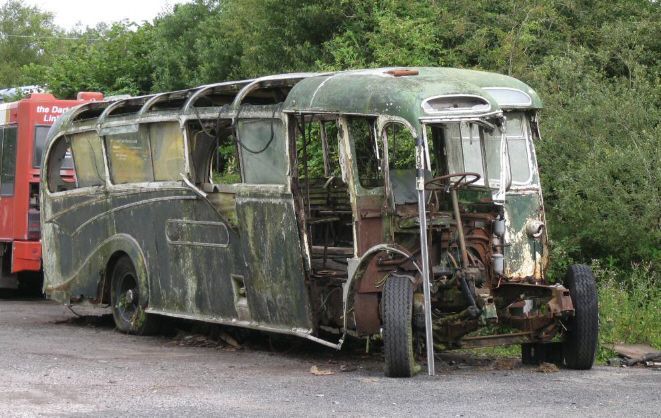 /p>
/p>
Further to the above, Peter has now moved away from the island and the Regal chassis, the body (dismantled) and a collection of spare parts are still there, safe and under cover. We will keep you informed of progress.
MANCHESTER RELIC
Here's an interesting picture you won't have seen before. Rediscovered by Peter Caunt, it shows a Manchester Corporation Leyland Titan TD1 in 1953.
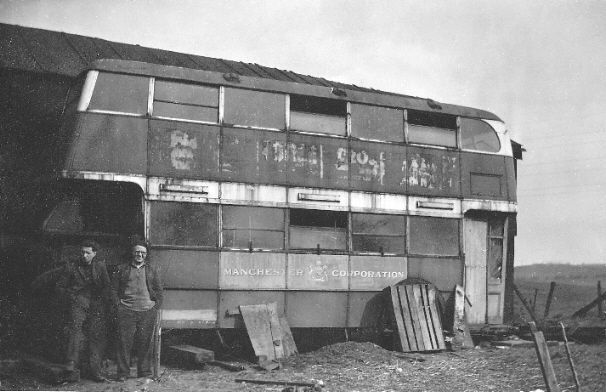
New in 1930, No.246 (VR 5768) was one of Manchester's first and only delivery of Titan TD1s, numbered 209 to 248, and acquired to replace single-deck trams on the 53 route between Cheetham Hill Road and Trafford Park. The forty buses were a mixed bunch - although all had lowbridge 'piano fronts' - bodied by Short Bros, Strachans and Brush, with this particular example being a Strachans product. The upper deck had a sunken gangway on each side, and seven rows of triple seats in the middle.
In 1935-36 a major rebodying programme was undertaken, and 246 received a new Crossley 52-seat lowbridge body, with a sunken gangway on the offside only. Many Manchester buses were hired to London Transport (and later to Crosville) due to wartime shortages from 1940 onwards, and 246 may well have been one of those. In 1945-46 the fleet was renumbered, and all Leylands had 3000 added to their fleet numbers, so 246 became 3246. The very last of the TD1s were withdrawn in 1950, including this one.
Peter took the picture in 1953 when the bus was in use as a store on a farm at Slattocks Bridge, between Manchester and Rochdale. He says that the body was quite complete, and the pneumatic bell push would press, although it didn't ring the bell! You will not be surprised to learn that there are no surviving Manchester TD1s. If only....
My thanks to Peter for sending the picture.
REGENT MOTORWAYS
Mike Butler contacted me because his father used to drive for Regent Motorways of Redditch, Worcestershire, and he wanted to know more about the firm. Later he came across a treasure trove of colour slides taken by his father in 1965-67 - all with dates and locations. Here's one of them:

This splendid collection of 1960s coaching products was recorded at Regent Motorways' Studley depot
in 1967, and shows (from left to right):
The Grenadier on the right apparently won a prize at the Brighton Coach Rally in 1967, and Mike's father drove other Regent coaches at the rally on several other years. The number 722, by the way, was apparently considered lucky by their 1960s managing director John Jakeman. Regent Motorways had a large and varied fleet which, over the years, included Harrington fin bodies, Seddon Pennines, and several Bedford VALs.
A great picture, and my thanks to Mike for sending it (and several others!).
Mike Lloyd wrote in with the following additional note: Great pic of Regent Motorways' vehicles. I have a fleet list dated 1.68 (PSV Circle) and the only vehicle which fits the description of the unknown possible Bedford is 186 CUY, Bedford SB1 Plaxton Embassy new in 1961 and acquired by Regent 2/67 from Luxor Coaches, Abbots Langley, Herts (where I spotted it). It had been new to Supreme, Stourbridge. Hope this is of some help.
Allan Haynes wrote: Re the picture of the Regent Motorways lineup at Studley, Redditch - my wife's old stamping ground - I drove for Spring's Coaches of Ashton under Hill, Evesham in 1976-77. As the new boy I of course got the oldest coach, an SB1 Plaxton, by then old and tired and pretty decrepit. I almost recognised the number and I have a feeling it was red and grey, not red and cream like the rest of the fleet - so does anyone know where 186 CUY went after Regent? I can't imagine there were a lot of Plaxton SBs about in Worcestershire by 1976 so I guess this could be a picture of my bus. If I had stayed long enough I might have graduated to the Ford R192 Viceroy, but I moved my (part-time) allegiance to the Midland Red and learned proper bus work. Daimler deckers, horrible Ford saloons, and the lovely Leopards, still my favourite chassis of all time. Also a couple of weeks on a D9 when one of the Daimlers died. Definitely the weirdest vehicle ever.
Later Mike Lloyd found out where 186 CUY went - after a short life with Regent, it was apparently sold on to Fogarty, Broadway in 6/68 and then moved to Castleways at Winchcombe, date uncertain, but they withdrew it in 3/76. All this is from my records, based on PSVC publications. I imagine it did not live long after withdrawal by Castleways, but you never know - certainly I have no further details.
WALLACE ARNOLD TIGER TURNS UP AT THE FAIR
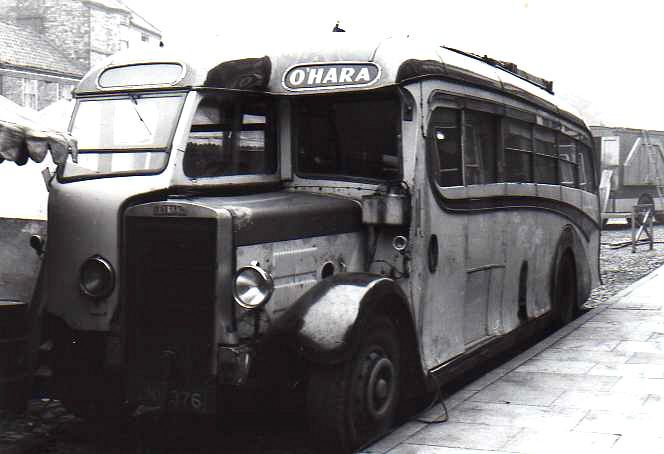
Douglas MacDonald sent me this picture, which is of a showman's Leyland Tiger TS8 with a Burlingham body, and the registration JNW 376. I guessed it might have originated with Wallace Arnold.
Robert Preston from Sheffield had all the answers. He said: You are right about the mystery Leyland Tiger fairground vehicle JNW 376 being originally operated by Wallace Arnold. Here are the details and history from the PSV Circle fleet history of Wallace Arnold, Part 1:
1940 Leyland Tiger TS8/Duple C32F motorcoach, JNW 376. Chassis No.306797. Body No.9423 Series 2. Re-engined with a Leyland 7.4 litre diesel engine in October 1947, and the body rebuilt by Wilkes And Meade in 1949. In December 1952 it was re-bodied with the 1949 Burlingham C33F body (No.3610) from MUB 435, a Wallace Arnold 1949 AEC Regal III, which received a new Plaxton FC35F body in 1953. It is believed that the fleet number of the Leyland, for at least some period, was 66. JNW 376 was withdrawn from service in 1954, then to N. O'Hara, Spennymoor in October 1954, on loan to Wilkinson, Darlington in 1955, and to a showman by 1959, withdrawn October 1960. Its last owner was F. C. Lester, Farnley, Leeds.
And Peter Tulloch confirmed it: From my collection of record cards I can positively identify JNW 376 as being a Leyland TS8 with chassis number 301697 or 306797 (there is a little confusion in the record I have!) which carried a (post war?) Burlingham C33F (re)body. My records show that it was acquired by N O'Hara of Low Spennymoor (later of Bishops Auckland) from Shaw Bros of Byers Green (date not recorded), who in turn had acquired it from Wallace Arnold (also date not recorded). It passed to 'Fairs' in June 1957. The registration dates from 1940.
Finally in December 2016 came the definitive answer from Bob Kell: I received a considerable surprise when I found my photograph of O'Hara Leyland Tiger JNW 376. I confirm that the information from your contacts appears correct (and I have shared information with Peter Tulloch). The photograph was taken on 20 September 1957 at Stokesley Show (Yorkshire North Riding). Bob's considerable surprise is because he does not sell many prints of his photos and, of course, holds the copyright to all his work. How this image came onto the internet is a mystery, and it is presumably a copy of a pirated version. Bob has kindly agreed to let the matter rest on this occasion, but it does serve as a warning to all webmasters and photo suppliers to check the copyright status of the images they publish (copyright remains with the photographer until 75 years after their death). I do my best to get permissions but it's easy to get caught out, and at least one website has been shut down as a result of inadvertent publication of images. Please be careful for my sake - I don't want to get into hot water! - and my thanks to Bob Kell.
PICTURES FROM SOUTH AFRICA
Every now and again Alan Kenny calls me from South Africa and sends some little photographic nuggets, either from his travels or his archive. Here are a few of his recent contributions:
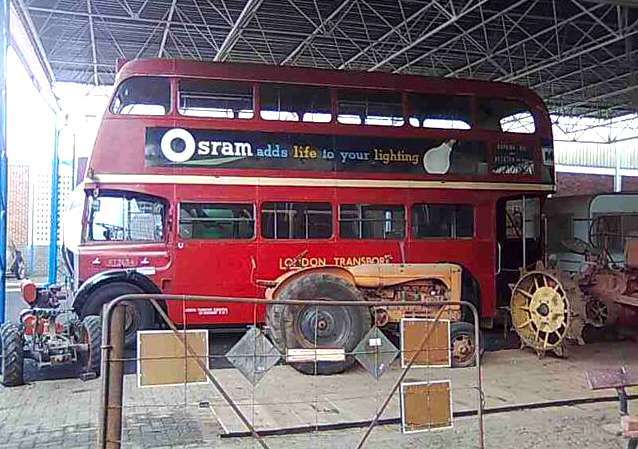
In 2008 Alan visited the James Hall Museum of Transport in Johannesburg and spotted a couple of interesting vehicles. Above is RT2634 (LYF 359), built in 1951 and exported to South Africa in 1964 after retirement from London Transport central area service. It appeared to be in good condition, and was carrying a 2008 road licence. Below is another exhibit at the Museum, an AEC Regent V that was No.839 in the Johannesburg fleet, one of 60 delivered in 1959 and bodied locally by Busaf.

I'm sure Alan would agree that the sight of an open door to a bus garage is too tempting to an enthusiast - you've just got to look inside to find out what's there. Sadly, these days the answer is probably not much, but it was not always so; sometimes you could discover an Aladdin's cave. The picture below was taken by Alan of Southdown's Elm Grove garage on Hayling Island, while he was on holiday there around 1959. While Beadle-bodied Tiger Cub 1036 (OUF 136) pokes its nose out into the sunshine (has it just had a wash?), one's attention is drawn to the wonderful aged deckers in the background. Must just jot down which ones they are, for the record.....

In May 2008, Alan returned to the scene of the crime and found the depot still standing, although it is now a hardware store. Thanks very much to Alan for his pictures, which are always welcome.

LONGWELL GREEN COACHWORKS
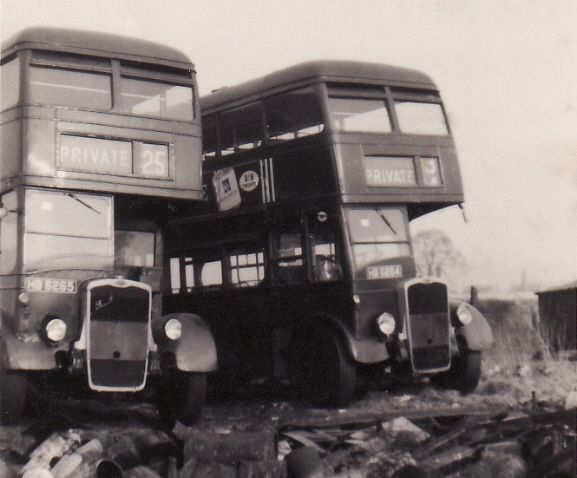
The picture above arrived courtesy of Chris Taylor, who says he took it in the mid 1950s at Longwell Green Coachworks in Bristol, where the buses were apparently being rebuilt. They are two of the three Bristol K6Gs with Massey H56R bodies supplied to Merthyr Tydfil in 1947. On the left is No.9 (HB 6265) and on the right is No.8 (HB 6264). This was an unusual batch, in that the K6G was not common, and nor was a Bristol K with a Massey body.
Alan George has pictures on his website of the bodywork as rebuilt, on his interesting webpage here, and differences include a new maroon and cream livery, a smaller destination box, and new windows. They were withdrawn in 1968 and 1967 respectively. Here is another of Chris's pictures:
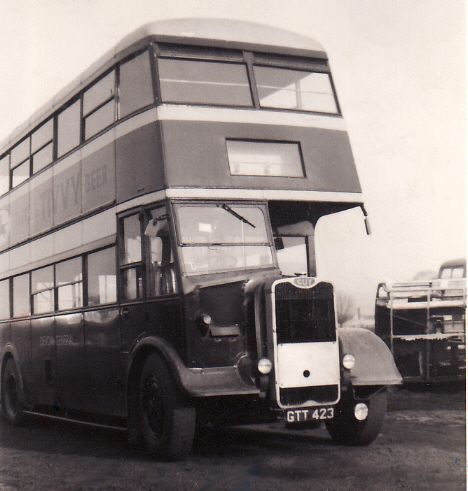
Also at Longwell Green's facility is Devon General Guy Arab II GTT 423. A little older than the Merthyr Bristol Ks, this was delivered as fleet number DG323 in November 1945, with a Park Royal body barely distinguishable from a wartime utility. So it's not surprising that the bus was in for a facelift in April 1956 when Chris photographed it, and the work was more than cosmetic apparently, as records show that DG320 to 325 had Longwell Green bodies after 1955-56, so perhaps all the Park Royal material was dumped.
Despite the rebuild, the five Guys were put into store during the winter of 1958-59, their duties being taken over by Leyland Atlanteans during the summer of 1959, ending the career of all Guy Arabs in the Devon General fleet. Like several of its compatriots, DG323 was still in store at Torquay in 1960 awaiting a buyer. Was it ever sold? I suspect not, and probably all that effort by Longwell Green ended in the scrapyard after only two summers.
I am most grateful to Chris Taylor for two interesting pictures.
NEWBURY REGAL
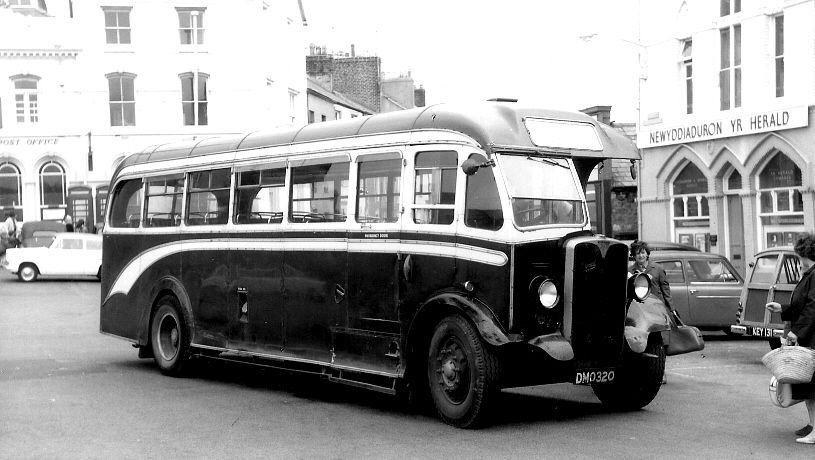
Regular contributor Chris Stanley kindly sent me the above photo from his collection (photographer unknown). He came across the attached pic as he was sorting out old photos. DMO 320 was an AEC Regal O6624583/Duple B35F 45107, new in 1947 to Newbury and District as No. 131. In 1950 it moved on to Thames Valley as No. 131. The location is Castle Square, Caernarvon, and the operator is probably Hughes of Rhostryfan (all info courtesy of Peter Relf).
That's all pretty comprehensive. The only comments I would add are that DMO 320 was originally the first of ten similar buses (131-140, DMO 320-329) delivered to Newbury and District, all of which had the pleasing Duple "D" type body. No. 131 remained in service (in Thames Valley livery, but using the original fleet number) until 1960 when the last Regals in the fleet were replaced by MW6G buses, and by which time the Newbury and District name had disappeared completely. A surprising number of these Regals were sold to small Welsh operators.
My thanks to Chris for a fine photo.
CROSVILLE K6A STILL AT WORK
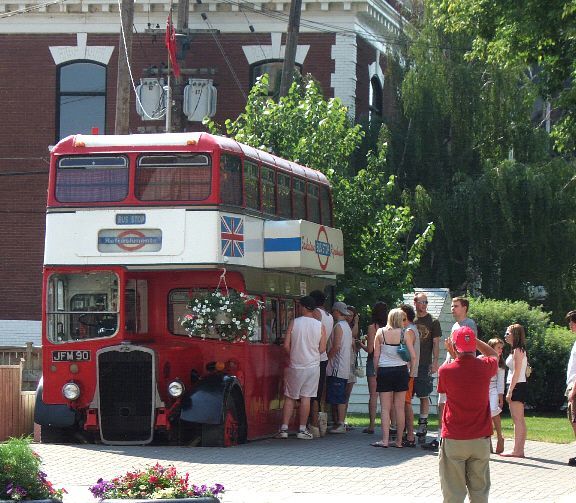
John Sumner very kindly sent this picture he took of lowbridge Bristol K6A JFM 90, delivered new to Crosville in 1949 as MB337, becoming DKA337 in the later renumbering process. As soon as it had been delivered, it was whisked off with 29 others to serve with London Transport, in order to fill a shortage of buses in the capital during 1949-50. Allocated initially to West Green garage (working routes 144 Ilford - Turnpike Lane, and 144A Enfield - Muswell Hill), it was later moved to Dalston and operated south of the river. So JFM 90 (probably unknown to its present owners) can genuinely claim to be a London bus!
It returned to Crosville in 1950, but early in 1966 it was withdrawn from service and began another adventure. Along with sister buses DKA319 and DKA 327 (JFM 72 and 80), both of which had also worked in London, JFM 90 was exported to Canada. There have been no reports (as far as I know) of JFM 80 since a sighting in Detroit in 1969. Meanwhile JFM 72 was last seen in a British Columbia scrapyard in 1997. So it's likely that JFM 90 may be the only surviving Crosville K6 in the world (there are none in UK, although there are some KSWs) - unless you know better.....
John came across it in Saskatoon, Saskatchewan, Canada, where it has a clearly popular function as the Bus Stop Refreshments fast food outlet. Thanks very much to John for the interesting photo.
SOME SALISBURY SUNSHINE
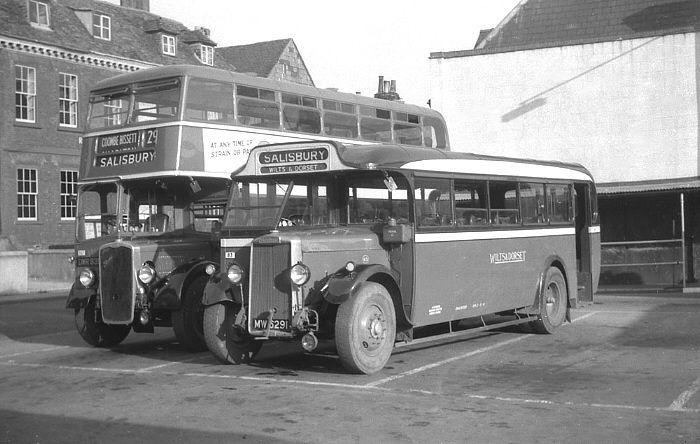
Never before published, and copyrighted as part of the Nick Webster collection, it is seen here in Salisbury in June 1952 as Wilts and Dorset MW 6291, a 1930 Leyland Lion LT2 which originally carried a Harrington body, but was rebodied C30R by Eastern Coachworks in 1943. Nick mentions a fleet number of W130 but it appears to be wearing the number 83. Can anyone provide more details of this bus?
By the way, the vehicle alongside would appear to be Wilts and Dorset lowbridge Bristol K5G No.267 (DMR 839), from a batch of five bought in 1946.
Many thanks to Nick Webster for sending me the fine picture.
Dave Mant kindly wrote: I just happen to have a copy of the PSV Circle/Omnibus Society history of W and D published in 1963. This quotes MW 6291 as fleet No.83, Leyland LT2 with Harrington bodywork - REBUILT by ECW in 5/43. It was sold to a company in Southampton (scrap?) in 1/53. Its Company Body Number was 130.
I'm afraid I'm not quite old enough to remember these vehicles, being born in 1947. However, I well remember the Bristol K type from my time spent in the bus station in Salisbury from the late '50s onwards! Thanks Dave, that answers all the questions, I think.
Chris Taylor adds: Your photograph (a very nice picture, I might add) of 83 (MW 6291), was one of four Leyland LT2s with Harrington C32R bodies (81-84, MW 6289-92), complete with Walman sliding heads, all entering service in May 1930. Nick Webster's reference to W130 for 83 refers to the body number, and may have been W and D's body number.
A few years after delivery the original Leyland 4-cyl 5.1 litre petrol engines (28.9 hp) were exchanged with the Leyland 6-cyl 6.8 litre petrol units (38.4 hp) from Leyland TD1s 74, 75, 87 and 95. All four carried Salisbury Police plate numbers 9-12 (81-84) in sequence. All four were rebuilt by ECW as C30R in 1943. The original Walman sliding heads were removed and the apertures panelled over. Folding doors replaced the original outward-opening type. Cov-Rad conversion radiators were fitted several years later but, unlike certain other coach rebuilds, maroon flashes were not added.
81-83 were sold to Whitehouse Metal Ltd. (metal merchants), Northam, Southampton 1/53 and then to A. E. Gash and Co. Ltd. (haulage contractor), Millbrook Road, Southampton. 84 went to B. Hanslip, Redbridge, Southampton 3/52; Sparshatts Ltd., Redbridge, Southampton 4/52; a showman by 7/52. Information is from PSVC P.H.2 - Wilts and Dorset, March 1963.
Meanwhile Pete Renaut wrote in February 2012 regarding the K5G (DMR 839) parked alongside. He said: This bus was sold to Eastern National in 1963 together with 5 others 264, 266, 268-70. (Registrations DMR 836/8/840 and EAM 612/ 613. I well remember them being repainted from red to green, which stood out in Prittlewell works in 1963 when making a special visit on the way home from school. They did not last long in Southend, being withdrawn later in 1964 and sold to Twell's, dealer. There are photos of EAM 612 and 613 in service in Southend on David Lang's SCT61 website.
Thank you Pete.
HANTS and DORSET LION IN USE AS MOBILE SHOP
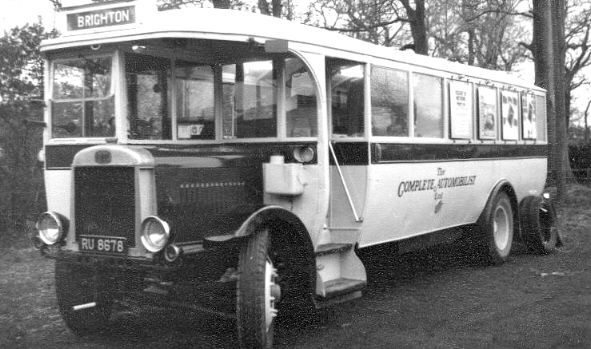
Peter Caunt, from faraway New South Wales, Australia kindly sent me this picture. RU 8678 is an all- Leyland Lion PLSC3 that started out as Hants and Dorset No.268 in January 1929. It was more than 40 years later that Peter photographed it.
Peter writes: I attach a photograph of it when owned by The Complete Automobilist, who sold vintage car spares and used it as a mobile shop. It was taken at a VSCC (Vintage Sports Car Club) meeting at a Cheshire pub in early 1970. The firm was based in Baston, Lincolnshire.
The bus has survived - almost. Now heading for 80 years old, the body has proved to be beyond saving, but the chassis has been acquired by Dougie and Ross Scoular, who are in the process of attaching a spare ex-Ribble Leyland body to it at the Scottish Vintage Bus Museum. In 2023 it had returned to Hampshire and was a star performer at the King Alfred running day in Winchester. Many thanks to Peter for the picture.
DAIMLER ON LONG VACATION

Another picture from Malta kindly sent by Peter Skerry shows JVV 266G hiding away in storage. Ex Northampton No. 266 (now open-top), this Daimler CVG6 dates from 1968, and Peter explains why it's in Malta:
I thought you would like the attached which has been here in store for nearly 14 years through lack of operating approval. There are five other open tops here, all Leyland Fleetline 1977/8 vintage. Three will be employed soon by the operator who has a contract from the ADT (Public Transport Authority) and I am aware that he is purchasing three more and a spare from the UK to meet this new requirement.
The Daimler and the other two Fleetlines belong to an operator who failed to get the contract. However, it now seems highly unlikely that the bid winner will be buying the open tops from the bid loser. There has been some speculation that someone in the UK may buy the Daimler for preservation, or in part exchange for a later coach.
Tony Griffin has a picture of this bus in service on this page: http://tony3972.mysnaps.org.uk/p15750848.html. Meanwhile, sister bus No. 267 is in the U. K., preserved in original condition by the 154 Preservation Society in Northampton.
My thanks to Peter for sending the photo and the information.
RAF COMMER COMMANDO TAKES OFF
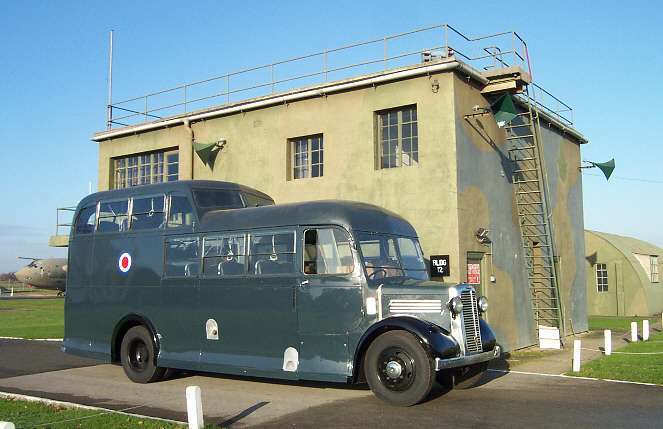
A superb example of a 1947 Commer Commando crew bus used by the Royal Air Force on Yorkshire airfields has been secured from The Lincolnshire Aviation Heritage Centre, East Kirkby, as the latest addition to the Yorkshire Air Museum's historic vehicle collection. It is the oldest surviving RAF Commer Commando one and a half decker bus and, in 1999, was one of only five remaining examples - there are probably fewer now. Under the care of the Panton brothers in Lincolnshire the bus raised substantial funds for the RAF Benevolent Fund after repaying the investment made by the General Engineering Flight at RAF Cottesmore, who undertook the complete restoration of the vehicle.
XAT 368 was delivered to the RAF in April 1947 and served at various Yorkshire airfields, before being sold at Ruddington in October 1957. New owners Hull Cricket Club found it slow, causing the team to frequently arrive late for matches, although it was good for holding kit! However, a new gearbox cured this problem, but after two years, it was sold on to Newall Engineering, as a staff bus. It then passed to two commercial operators, Primrose Valley Garage and Coaches and W and H Lamb. Possibly due to the fact that it only had 21 seats, it proved uneconomical as a coach and was only in such service for seven months. It seems to have been mothballed before being sold to the British Auto Racing Club in June 1962 for use as a race control vehicle. This saw the removal of many of the seats and reconfiguration as a mobile office, with desks and tables. Sadly the bus fell into disrepair and was last driven at Silverstone in 1972, laying in decay until being bought by David Hardcastle in 1978. Despite David's intentions to restore the vehicle, it remained in this state until he donated it to the RAFBF and the team at RAF Cottesmore in October 1993.
It is now fully running, with the engine described as being as sweet as a nut. Some cosmetic work and electricals need attention on the dashboard but, apart from that, it is pristine, having been totally stripped, reskinned, repainted, re-upholstered to original specification and brought back to serviceability. Since it arrived, the Commando has generated a lot of excitement and enthusiasm amongst staff and visitors. It is sure to become a major attraction in its own right.
Dave Walton from Crewe sent me the following additional information in Jan 2009:
I was a founder member of North Kent Vehicle Preservation Group to whom David Hardcastle belonged when he acquired this vehicle, and we used my ex Cornwall County Fire Services Austin fire appliance to effect the recovery from Yorkshire. If anyone knows David's whereabouts I would very much like to get in touch with him again.
The recovery is still very fresh in my mind even after 30 years and was done with the aid of two other friends from Gravesend, namely Jim Price and Tony Rich. David took the fire engine to Yorkshire during the week, leaving his Mazda 323 for me to drive to Leeds with Jim and Tony on Friday evening after we had all finished work for the week. On Saturday morning we all drove to the hill climb site where the bus had been used as a commentary box, hitched up and started trundling down the M1. A panic moment ensued upon being followed into a service area by a police patrol car with deliberate intent, whose occupants merely wanted to know whether we knew of anyone who may want a Zephyr Zodiac that one of them had for sale!! We spent the night at David's home at Markyate, continuing down to Kent via Central London on the Sunday.
It is really lovely to know that our small efforts over that far distant weekend have helped a rare vehicle to survive and eventually be restored to her former glory and that David's purchase and generosity have also borne fruit - I really must try to see her. Also, a big thank you to all those involved at Cottesmore - she looks a credit to you all.
WEMS OBSERVATION COACH
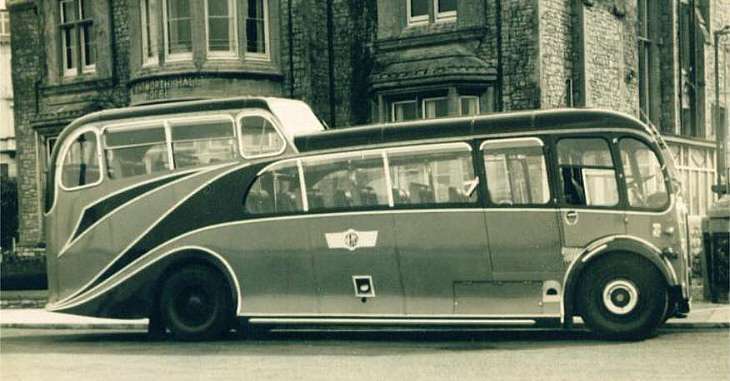
Keith Scudamore kindly sent me this photograph of a Maudslay Marathon III operated by WEMS Coaches of Weston-super-Mare. His father, Percy Scudamore, was the first driver, and it attracted much attention. As a boy, Keith often went on trips if there was a spare seat. It is parked at The Marine Parade, Weston-super-Mare outside the WEMS Garage, formerly Burnells. Keith thinks the livery was a soft grey with maroon stripe, and looked great!
Percy Scudamore worked for Flossie Burnell who owned Burnells Coaches of Weston-super-Mare from 1945 to 1950. Keith remembers that in those days all the coaches lined the prom with the drivers touting for customers to take them on afternoon trips, the highlight often being an afternoon mystery tour taking in Cheddar, Axbridge, and often Mrs. Tilley's for afternoon tea (2 boiled eggs for the driver!). When Flossie died, the company was taken over by WEMS.
This observation coach body style was built by James Whitson and Co., of West Drayton, from the late 1940s onwards. The WEMS example (DFR 395) was one of the first, and was used by the company until 1960. Some, such as this one, were built for front-engined coaches, and a later version was made for underfloor-engined chassis such as the Regal IV, the Leyland Royal Tiger and - most commonly - Fodens. I believe the total built was only about 25, of which the largest customer was, surprisingly, the United States Air Force who bought ten for use in the UK to move crews and officers about. Sadly no examples of the design survive today. Incidentally, perhaps Whitson's greatest claim to fame was that they built the bodywork on the famous Green Goddess fire engines.
WEMS Coaches were eventually taken over by Bakers Coaches of Weston-super-Mare in 1981. They subsequently acquired Dolphin Travel and became Bakers Dolphin, still operating today.
My thanks to Keith for a fine photograph and the interesting background information.
In February 2008 Philip Kirkman-Page wrote: As a small boy in Weston-super-Mare in the 1950s/60s, one of the things I did in the summer was to collect the names of coach companies bringing tourists to the seaside - don't ask me why I did this, I have no idea. WEMS were my favourite company, unlike the bigger (blue and grey) Bakers company, and I can assure you that WEMS were grey with green striping and detailing, not maroon, as all my Dinky Toy coaches were very carefully repainted. I recall this actual coach and had a Dinky model in the same configuration.
Steve White emailed in Sept 2009 to say: The legal entity of WEMS was Burnell Motorways (1947) Ltd, trading as WEMS, and this legal lettering was on the coaches right up until the merger/sale to/with Bakers in 1981. I'm not exactly certain whether it was a takeover or merger, as reports in the local papers weren't very clear at the time. WEMS also had a garage at Clevedon up until the late 1970s which had been Dorothy's Coaches, owned by Binding and Payne. They later took over a number of companies including Cutler's of Nailsea, Gratton's of Burnham on Sea, and Burnell's of Weston super Mare, and formed WEMS Western Engineering and Motor Services.
Neil Gratton added: I was very interested to read the pieces on WEMS and pleased to see the name given in full as Western Engineering and Motor Services (actually with a Ltd on the end). Steve White is not quite correct, as Gratton Bros were not taken over, as I understand it, but were involved in the big merger. This strangely included an engineering company in Clevedon which eventually became Cam Gears. My grandfather Tom Gratton was the founding managing director. Sadly we do not have much information from that time so if anyone does know more I would love to hear from them.
HANTS and DORSET K6B TURNS UP
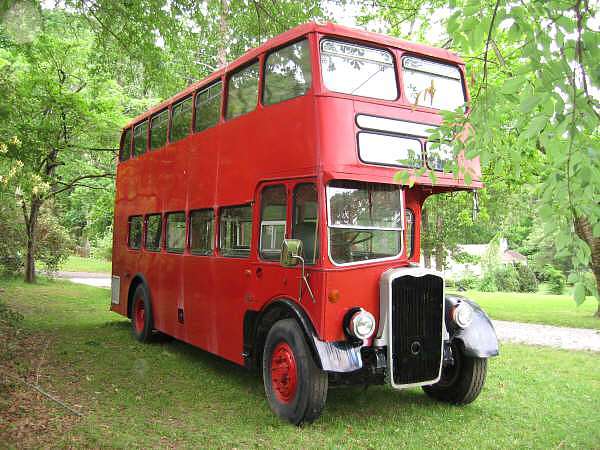
Timothy McAbee in Birmingham, Alabama, USA has recently purchased a 1949 lowbridge Bristol K6B, chassis number 76067, delivered new to Hants and Dorset as fleet No. 1230 (JEL 249). It was one of a batch of 32 delivered during 1949-50, numbered 1225 to 1256 (JEL 244 to JEL 275). They were a mixed bunch with Bristol AVW, AEC and Gardner engines, but this particular example had an AVW. Timothy wrote: unfortunately, sometime after the bus was imported to the States, the original engine and transmission was removed and replaced with an American made V-8 gasoline engine and automatic transmission: the drive shaft was modified and air brakes were installed.
Since Timothy wants to return it to its original condition he was seeking a replacement Bristol AVW engine, which is not an easy thing to find. But he has been successful in locating one! He says: the exterior bodywork is in great shape for the most part. A few years back the previous owner had the exterior skin removed, wood framing repaired, the skin re-installed and the bus painted. The interior was spruced up at the same time and is in relatively good condition. The chassis appears to be in good condition over all. There are only a few spots of rust in the front fenders, which can be easily repaired.
My true passion has been restoring English automobiles, primarily sportscars. I have a collection of vintage vehicles, including nine Jaguars produced between 1951 and 1967, six Triumphs produced between 1949 and 1979, and a 1960 Austin Healey 3000. I am a stickler about my restoration work. All my restorations involve complete tear-downs and rebuilds of all components. I try my best to restore the vehicles to the way they looked and operated when they rolled out of the factory. My goal is to restore the Bristol to as close to original as I can get it.
This particular bus had not been reported for about 30 years, so it was a surprise when it turned up in Alabama. Only two from that batch still existed at that time, one in the U. K. (No.1238, JEL 257, which is a K5G) and this one. There was another one in Ontario, Canada (1228, JEL 247, a K6A) but it was scrapped in 1995. The one in the U. K. was found in a wood by a collector in 1999 and, although it has been rescued for future restoration, I believe work has not yet commenced. Sadly JEL 257 was destroyed in a storage unit fire in December 2023.
Many thanks to Timothy for the details and the picture. We wish him good luck with the restoration.
SOME LONDON RELICS (AND SURVIVORS) AND A MYSTERY
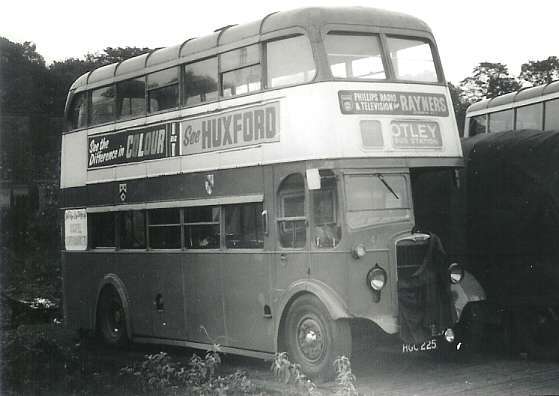
Chris Stanley has been kind enough to send me some fascinating photos taken by his cousin, Peter Esposito, in the late 1960s. To start with, the picture above was taken in Crystal Palace railway yard on 13 October 1968. It shows STL2692 (HGC 225) which was to become the only survivor of the 1946 Weymann-bodied green STLs. When retired in the mid- 1950s, some went to Dundee (see my Dundee page here for details), some went to Widnes, and this was one of six bought by Grimsby. Having served in Grimsby for more years than it did with London Transport, STL2692 was finally withdrawn in 1968 and bought for preservation, and it was at this point that Peter took the picture at Crystal Palace. It has now been restored to its former glory and can be seen periodically at rallies in the south east.
Now, before we move on, a little distraction. In June 2011 Chris Youhill from Leeds sent me the following email: I am amazed to see that an ex London vehicle fitted with a destination blind from Samuel Ledgard of Leeds, for whom I worked as a conductor and driver for many years. Picture attached of an ex Ribble all-Leyland PD1A (BCK 421) in Otley Bus Station displaying such a destination blind.
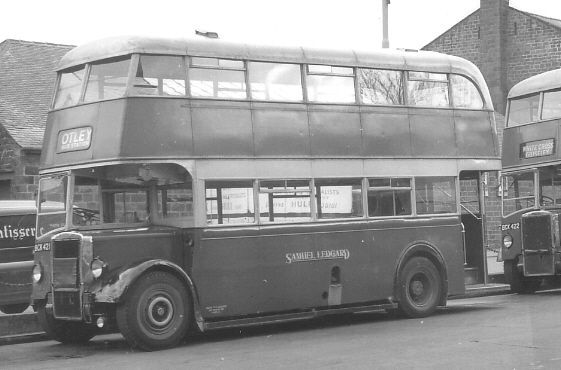
Now I'd never noticed that STL2692 was wearing a blind reading OTLEY BUS STATION, but it is a little odd for a bus that had supposedly been working in Grimsby.
Chris added: I've just realised something which may give a small clue or pointer. The STL picture was taken in 1968 - and Samuel Ledgard was taken over by West Yorkshire Road Car Co. Ltd. on 14th October 1967. Almost ninety vehicles from the S L fleet were immediately withdrawn for disposal and the destination blinds could be purchased from various W Y depots for 2/6d each - needless to say I bought a good few.
Perhaps someone can reveal the story behind that. Anyway thanks to Chris for bringing it to my attention.
Meanwhile let's return to the photos sent by Chris Stanley. Below is another picture taken by Peter on the same day, and in the same yard.
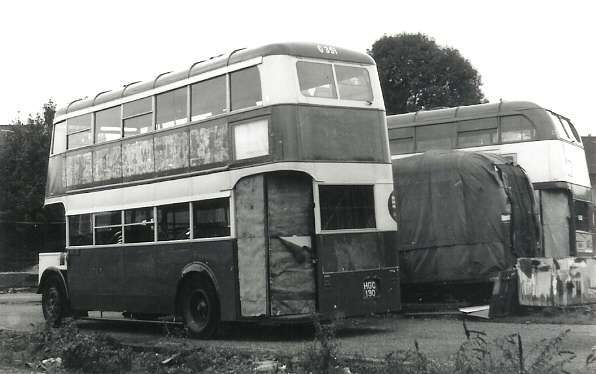
Utility Guy Arab G351 (HGC 130), destined to be another survivor, entered service with London Transport at the beginning of 1946, being based mostly at Upton Park depot, where it was common practice to paint the fleet number on the rear roof dome (visible in the photo), so that the staff in the offices above could identify each bus. The Guy served in the east of London as a red central area bus for even fewer years than the STL shown above, passing to Burton-on-Trent in 1953 as their No. 70.
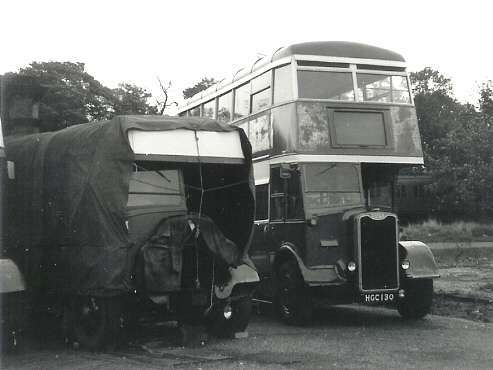
It was thankfully acquired for preservation on retirement in 1967 by Rev. John Lines, who rallied it occasionally, but passed it to the London Bus Preservation Trust in 1970. However a total rebuild eventually became necessary, and this was finally completed in 2005, when the bus emerged as the only complete survivor of the breed. Rumours of perhaps another four examples in various conditions have never been substantiated.
John Lines was most interested to see these pictures, and told me the single decker (on the left) was ex Devon General HTT 487 if I remember correctly. It was swapped by Devon General with Leicester Corporation for a double decker, if my memory also serves me right! It is now fully restored with a member of the Devon General Society. That would be Ron Greet's fine 1946 AEC Regal, now based near Torbay. My thanks to John for the information.
Finally we have another Peter Esposito photograph of a vehicle with a varied history.
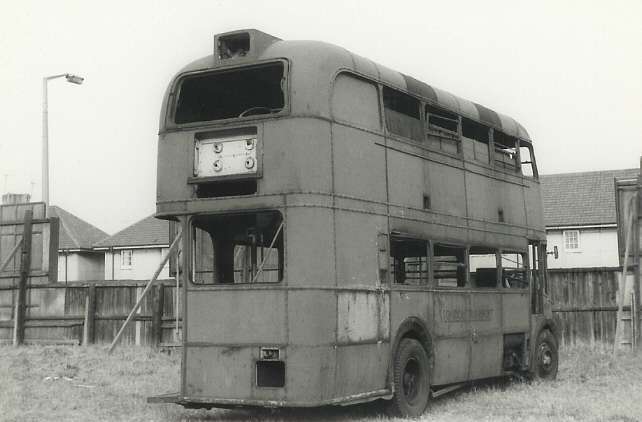
Eagle-eyed enthusiasts will immediately recognise the rear roof box, and possibly also the sloping lower line of the cab window, indicating a pre-war RT. This was RT106 (FXT 281), new in 1940, although it didn't enter service until the following year. Retired from central area work in 1955, it became an LT service vehicle, one of only two pre-war RTs to do so (the other being RT19, whose chassis was used for instruction purposes, and the body mated with RT1420 to become 1037J, a mobile instruction unit). And so RT106 became 1036TV, a unique machine used to demonstrate techniques for righting overturned buses.
It was based at Stonebridge Park for this duty, and that's where Peter photographed it on 11 February 1968, when it was clearly coming to the end of its useful life. Not surprisingly, when the London Bus Preservation Trust eventually bought it in 1971, it was only as a supply of spare parts.
Thanks very much to Peter Esposito for taking the photos and allowing me to use them, and to Chris Stanley for passing them on.
DISGUISED GEMS IN MALTA
Peter Skerry was fortunate enough to live on the delightful island of Malta, and had been doing some research into the famous buses there. He kindly sent me several fine pictures of hidden treasure, still to be found in service in 2006. DBY 346, for example, is not quite what it seems.
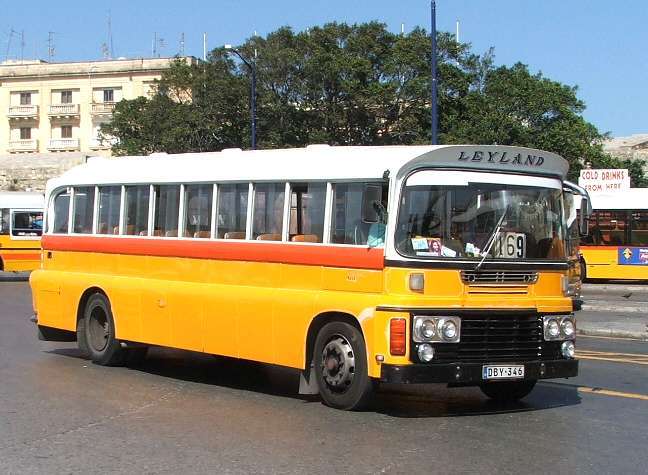
Ignore the word LEYLAND above the windscreen of this bus, because beneath the typically Maltese exterior, is hidden the chassis of a 1948 AEC Regal III registered as HYP 309 with chassis number O962147. Probably new to Rickards, London, the vehicle subsequently transferring to Best, then Catt and Swinn, and finally Vine, all three companies being based in Great Bromley, Essex. The original Plaxton coach body was replaced when the vehicle was exported to Malta. Meanwhile, below is a vehicle with much older origins:
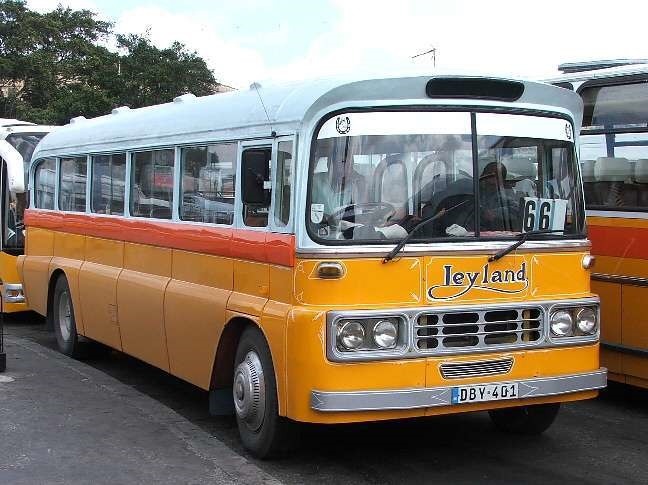
The chassis of this beast is a 1932 Leyland Tiger TS4 (chassis number 182), new to Scottish General Transport as AG 8284 and passing to Western SMT as their number 328. Later joining the fleet of Greenock Motor Services, it came to Malta around 1952, and is now wearing its fourth body (at least!), having been fitted with a Pickering B30F when new, receiving a Burtenshaw coach body in 1936, a second-hand Leyland bus body around 1948 (from a 1937 Tiger TS7), and then this Debono B40F body. It was registered DBY 401, and was still active in 2006. The next one is a bit of a mystery:

According to the PSV Circle information, FBY 716 incorporates Leyland TS chassis number 292672 from 1939, but they don't know the original operator. This would seem to be a chassis number for a Tiger TS8, but maybe some sleuth out there can tell us more.
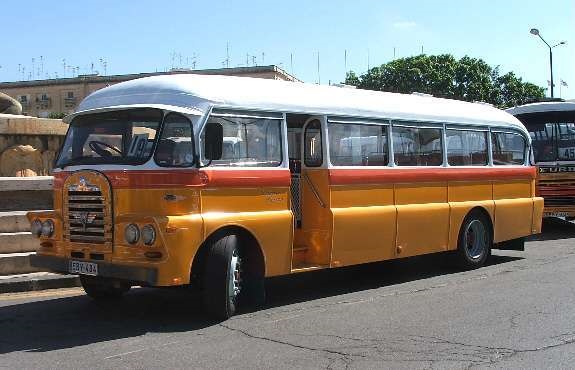
It's hard to believe, but this started out as Rhondda No.64 (GNY 764), a 1948 AEC Regal III. Originally with a Longwell Green B34F body, it passed to Thomas Bros., Port Talbot in 1958 and eventually wound up in Malta. Until recently it was registered DBY 312, but has now become EBY 484.
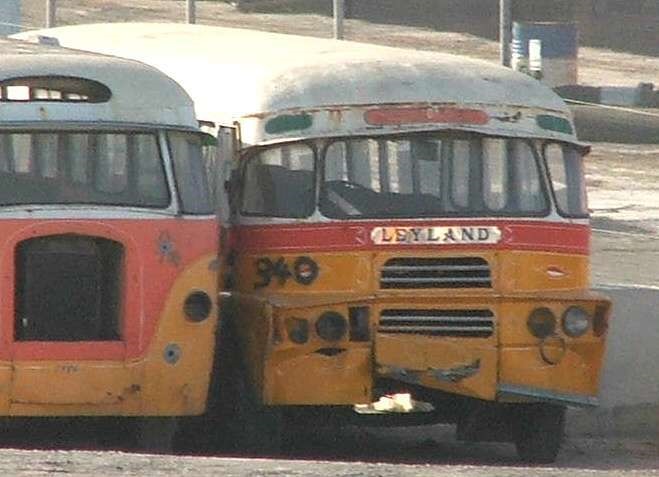
Finally we have DBY 340 (on the right). Starting out as Lincolnshire Road Car LT472, a 1937 Brush- bodied Leyland Tiger TS7, it was exported to Malta around 1960, rebodied and re-registered as DBY 340. The bus was withdrawn in 2003 and its registration re-used on a Chinese King Long bus in November. Operators in Malta can get a subsidy for a new bus if they hand in an old one to the ADT (Malta Transport Authority), and DBY 340 is a case in point. Here we see it, amongst about eight others, in June 2006 in a government compound at Valletta harbour. Though derelict, it does at least still exist. Peter tells me it was not easy to achieve that photo!
My sincere thanks to Peter for his photos and updates from sunny Malta.
TROLLEYBUS MEMORIES
Several trolleybus photos have been sent to me over the last few years, so the demise of the Routemaster (intended as a trolleybus replacement) seemed a good moment to look back at days past. First of all, here is a picture of Walthamstow trolleybus depot:

The photo was kindly sent by Dave Humphries, and shows the depot around the mid 1950s. It was probably taken either by his Uncle Les (Leslie E.Davis), who was a driver there, or by his Nan (Elsie Koolman) who was a clippie. I believe that all the buildings on the left have now gone, and only the one on the right (the original tram depot?) still stands. Perhaps someone can confirm this. Anyway my thanks to Dave for sending the picture.
Kevin Stephens tells me: I can confirm that the Tramway offices are the only surviving buildings, albeit now used as residential flats after the garage was closed and demolished in 1991. The rest is now also residential, entered by a road aptly called Omnibus Way. Thanks for that info, and to prove it, here is a picture kindly sent by David Fisher taken in August 2006 from about the same position.

Next we have a picture of trolleybuses in action, N1 1569 and N2 1659 at Hammersmith Broadway on route 666 to Edgware on 27 July 1961.
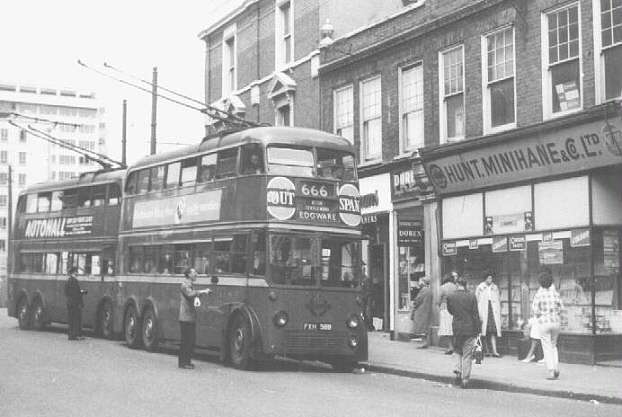
This is one of many fine photographs sent by Alan Kenny, who now lives in South Africa. As Alan observed, the South African connection is further enhanced by the adverts for Outspan oranges on the front of 1569 ! Many thanks to Alan for his varied contributions in recent years.
Finally, it's yet another picture of Routemasters in the night - we've had plenty of those in the around the days of the last runs of Routemasters some years ago. But this one is a little different, as it show RM1069 (with RM1076 behind) emerging from Fulwell garage, to be the first Routemaster to operate from that depot.
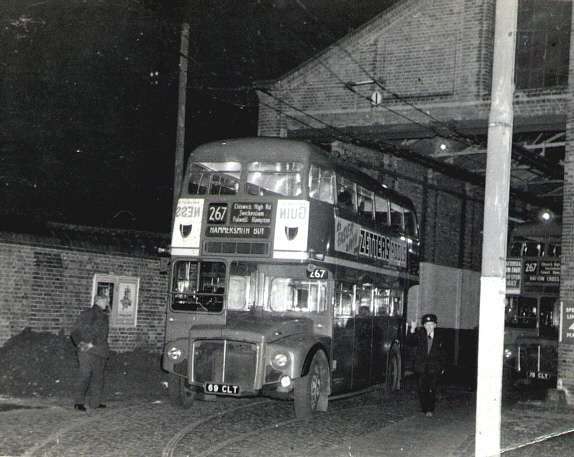
It was taken in the very early morning after the last night of trolleybus operations, 9 May 1962. Note the trolleybus wires overhead, and the tram lines still in the cobblestones below. Fulwell was a living history lesson.
RM1069 is still around, and currently in the fleet of Sullivan Buses of Potters Bar. Kathy from Sullivan tells me: we are indeed the keepers of RM1069. I showed the pic to the MD and he tells me that the bus was used to carry dignitaries around the route for a while prior to the official run-out, but he has never seen a picture of this. The bus has recently been repainted (original livery of course) and is awaiting ts gold lettering. Perhaps we should put some Guinness adverts on it!
My thanks to Les Fenn for sending the interesting picture, and to Sullivan Buses for the additional info. It just goes to show that, over 55 years ago, some folk were willing to stay up very late to see a Routemaster. Nothing changes, does it?
TRENT SOS IN OXFORD
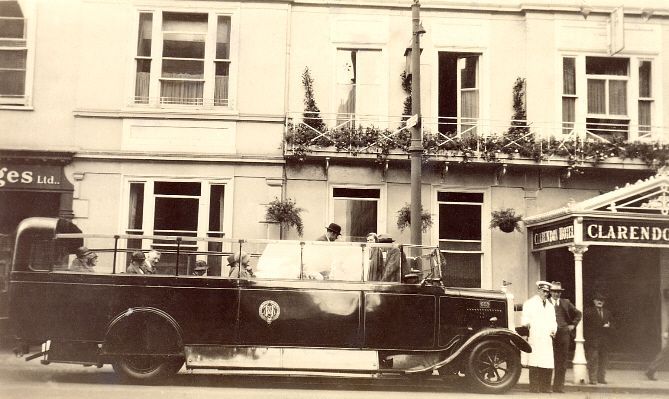
I've posted this picture just because I think it looks good. Steve Ley very kindly sent me this image that he acquired recently, showing passengers apparently embarking on a charabanc outside the Clarendon Hotel in Oxford. The vehicle itself turns out to be Trent No.603 (CH 6259), a glorious BMMO SOS QC built in 1927 with a Carlyle 30-seat body. It was one of a batch of five identical examples made for Trent that year, numbered 600-604 (CH 6256 to CH 6260). Midland Red also bought some of the same model during 1927-28. A great picture - Thanks Steve.
However - John Bennett thinks that the photo was taken outside the Clarendon Hotel, Midland Road, Derby, across the road from the railway station. Many thanks for that John.
DEEBLES
Rog Ingle very kindly sent me a bunch of photographs he took with a good old Kodak Instamatic. E. J. Deeble of Darleyford, near Liskeard in East Cornwall ran services from Upton Cross in the late 1970s and early 1980s, notably the 182 and 183. They later took over Pearce's Motors, Polperro who ran the Looe-Polperro service. Rog acknowledges that the pictures are not the greatest, but they are nonetheless interesting. Here is a selection:
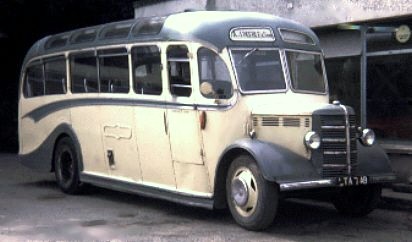
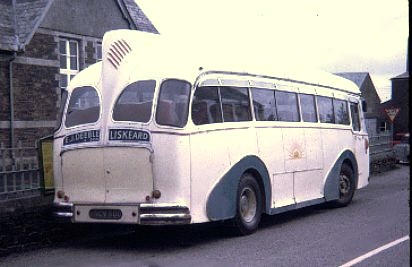
On the left is a 1950 Bedford OB (LTA 749), originally No.1410 with Western National. Colin Billington (who owns sister LTA 748) kindly informs me that it is reported to have been with Deebles from June 1963 to October 1975. On the right is Royal Tiger NCV 500, with a glorious Harrington fin body. It was new in 1950 to Pearce's, and transferred to Deebles with the takeover. (Pearce's is sometimes spelled "Pearse's", but Mike Grant tells me: the Western National timetable for Winter 71/72 gives the operator as Pearce's Motors Ltd., Central Garage, Polperro. Thanks for that - we'll assume it's correct.)
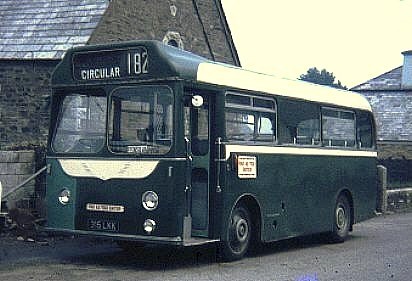
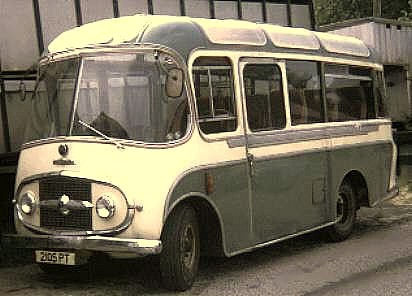
315 LKK is easily identified as ex-Maidstone and District SO315, a 1960 Albion Nimbus/Harrington B30F. This still exists, and is now preserved in St. Leonards. 2105 PT on the right is a Karrier/Plaxton coach, which Rog later saw (around 1985) in a pub garden near Pensilva in a rotten condition.
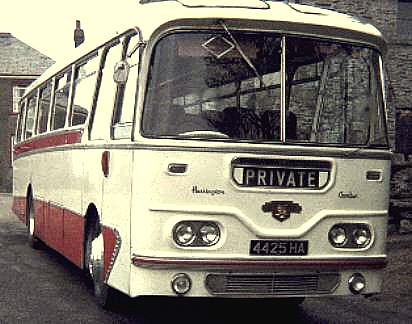
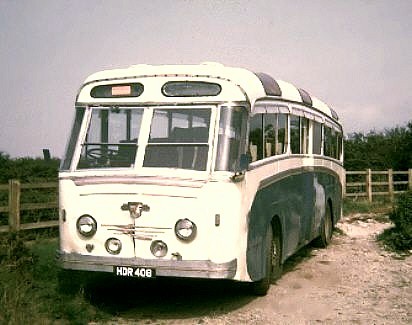
Leyland Tiger Cub / Harrington Cavalier 4425 HA had been new to Gliderways, Smethwick in 1962. Somewhat older, HDR 408, ignominiously dumped at Pensilva, was one of a pair of Leyland Royal Tigers with Longwell Green coach bodies delivered new to Plymouth Co-op in 1953.
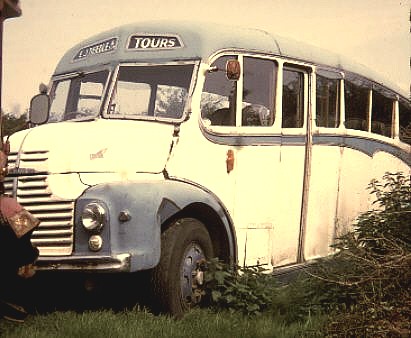
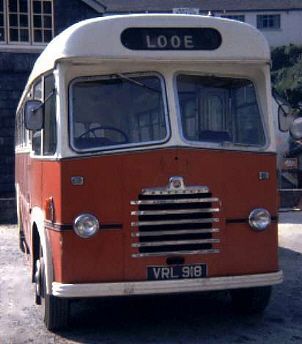
Leyland Comet MRL 910 is also seen dumped at Pensilva, circa 1983. Finally VRL 918 is a Bedford SB, # seen at Polperro, and another of the vehicles taken over from Pearce's. Thanks very much to Rog for the photos.
DAIMLERS IN DISGUISE
Here's another interesting little photographic tale by Vic Brumby. The location is the coach parking area at Wicksteed Park, near Kettering, Northants in the mid 1950s, and up the drive comes a strange piece of coachwork, operated by Spiers Tours of Birmingham, attached to a chassis with the registration number FOF 251.
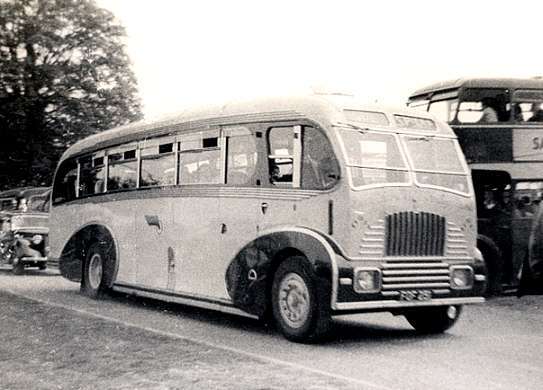
The body is by Burlingham, a design from around 1950 known as the Sunseeker (you can see a similar Alexander (Northern) Leyland Tiger PS1 here, photographed by George Bett). But what of the chassis? That registration number will probably ring a bell with Birmingham fans, as it was used by the many Daimler COG5/MCCW and BRCW H54R double deckers delivered in 1939. The last 30 of those were numbered 1240-1269 (FOF 240-269), and this chassis has obviously been transplanted from No.1251 on its retirement from Birmingham service in 1949.
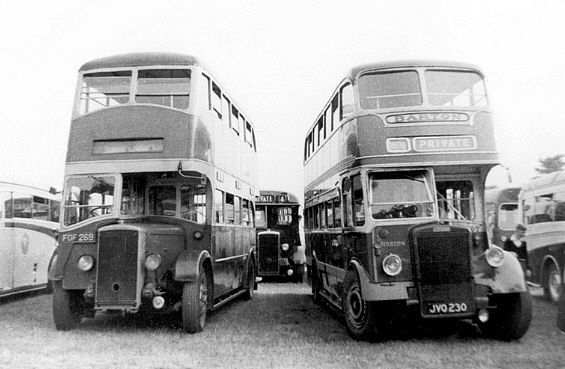
Meanwhile, nearby in the Wicksteed coach park is a double decker wearing the number FOF 269 and - Lo and behold ! - it's the last one from the same batch. Retired by Birmingham in 1954, it is seen here in service with Courts of Nuneaton. The body is not original. No. 1269 was built in 1939 with a BRCW H54R body, but it was replaced in 1949 by an English Electric H54R body which came from 1935 Daimler COG No. 765 (AOP 765). But that wasn't the original body for No. 765 either. It had been built and fitted to 765 in 1943, replacing the original 1935 BRCW body, which had perhaps suffered from war damage.
Anyway the wartime English Electric body on 1269 seems in reasonable order, apart from the dubious operating condition of the upper deck half-drop windows. So here we have two FOF Birmingham Daimlers (neither with their original bodies), and these days you won't even find one. That doesn't apply to the bus on the right, however. Lowbridge Barton Titan PD1A/ Duple L55F No.507 (JVO 230) from 1948 is thankfully still with us in fine condition, and can be found at the Nottingham Transport Heritage Centre.
Some of the other vehicles in that picture are intriguing too. Is that an RF on the right ? (Shane Conway thinks it's a BMMO vehicle, and he could be right. Maybe it's an S14, or somesuch). And what about the Daimler saloon in the middle ? Oh for a time machine! Anyway many thanks to Vic for more snippets from the past.
------
Returning to the top picture, in February 2007 I received this interesting email from Ray Spiers regarding FOF 251.
Our family business, A G and K M Spiers Ltd. of Queen Street, Henley on Thames, bought this vehicle from S S Motorways of Birmingham in 1952. It was a Daimler COG5 ex Birmingham Corporation Transport double-deck, having been rebodied by Burlingham in 1951. The chassis had been extended prior to being rebodied, to cope with 30 ft., 37 seat bodywork.
The vehicle was a pleasure to own, drove beautifully, and outwardly showed no sign of being anything other than new. Our customers were very impressed ..... especially with all the continental destinations on the louvres! It was driven exclusively by Albert Jones until 1954 (who took over and drove a freshly purchased 1952 Sentinel Plaxton, MYR 500) and then by Philip Compton. Both these top-drawer drivers kept the coach immaculate. Albert drove the vehicle on private hire European trips, quite a feat!
I am 90% certain that the driver in the photo is Phil Compton, who unfortunately died in 2006. I attended his funeral. During the War he served in the Army as a tank driver, being at Monte Casino of all places, and was wounded in action. He worked for Bury's Transport of Nettlebed after us. He then moved to Gloucester and worked for Red and White, becoming an Inspector at Victoria Coach Station, travelling every day from Gloucester to London and back! On his retirement he was featured in the Gloucester newspaper - well deserved too.
Unfortunately due to the shrouded radiator on this style of Burlingham body, plus having no cooling fan, the vehicle overheated. It was also underpowered, weighing in at 7 tons 7 cwt. so a cure was attempted by purchasing a life- expired Manchester Corporation Daimler CWA6 and replacing the Gardner 5LW with the CWA6 AEC 7.7 unit. Although we did some of the initial work ourselves, completion was by Caversham Motors. The downside to this was that the 7.7 was solidly mounted in the frame with resulting vibration at certain speeds. Skill was needed by the driver to try to steer clear of this.
This coach was very heavy on front tyre wear, and Michelin Metalics (the fore-runner to Michelin X) were fitted which partially helped. The Michelin X was a revolutionary and far superior tyre.
A little talked about subject is the flexing nature of the Daimler chassis, which caused 'creep' in the coachwork .... particularly the roof. This is due to the curved low slung style of the chassis which Daimler seemed to love, with (in my opinion) the bending taking place on the curved parts. This manifested itself on the Roadliner too.
We kept the coach until approx 1960, when we did an exchange with Lambert of Guildford for a 1954 Commer Avenger TS3 fitted with Duple 41 seat coachwork (KRP 688), as by that time we had several other Avengers, and on which we became more or less standardised until the AEC Reliance became our sole make. It is rumoured that KRP 688 still exists! Hope this is of some interest.
It certainly is. Thank you very much, Ray.
See more archived news and pictures on Page 1 (latest) or Page 2 (later).
Want to see some more? Have a look at all the other profiles on the Classic Buses menu page.
SOME LINKS WITHIN THIS WEBSITE: Home Email Links THE COMPLETE WEBSITE MENU Events Diary Halfcab list Small-Ads Classic Irish Buses Classic Manx Buses